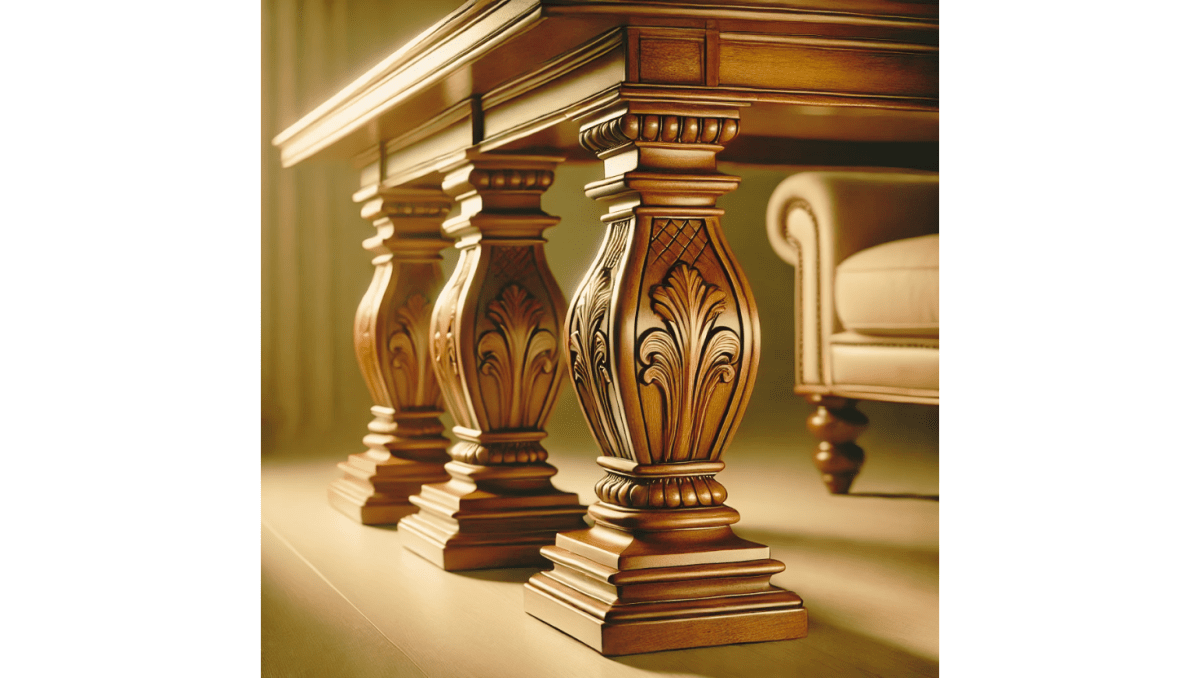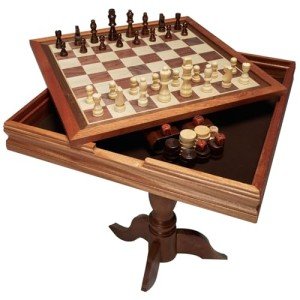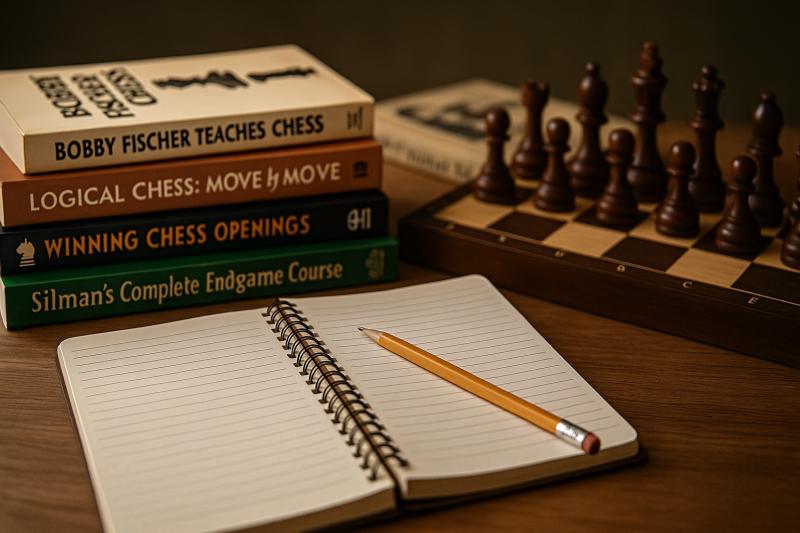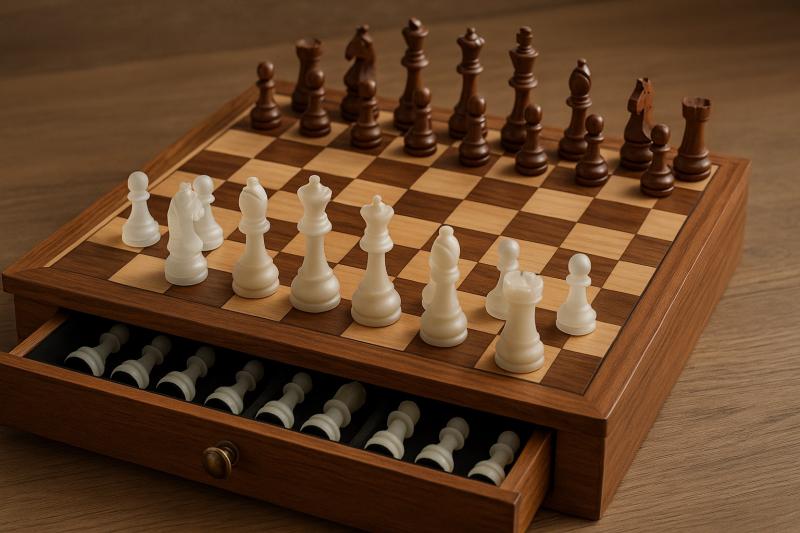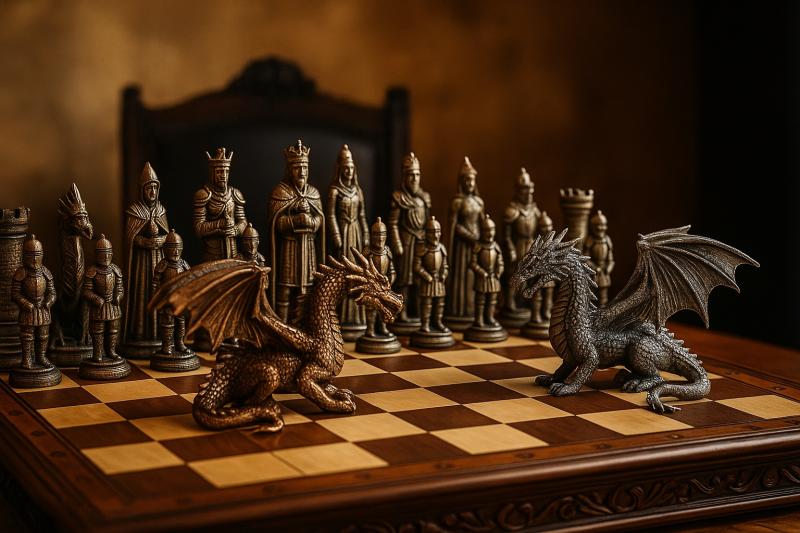Choosing the Perfect Chess Table – A Blend of Strategy and Style
A great game of chess isn't just about skill—it’s also about the environment in which you play. A well-crafted chess table does more than just hold your chessboard; it enhances concentration, comfort, and the overall playing experience. Whether you’re a casual player enjoying a friendly match or a serious competitor preparing for an intense battle, the right chess table can make all the difference.
Beyond functionality, chess tables serve as statement pieces, adding an element of sophistication and tradition to any setting. The right height, size, material, and design all contribute to ergonomic comfort, smooth gameplay, and long-term durability. From classic wooden tables to modern glass and metal designs, choosing the ideal chess table is about finding a balance between aesthetics and practicality.
In this guide, we’ll explore the key factors to consider when selecting a chess table, ensuring that your investment not only elevates your game but also adds a touch of elegance to your space.
Discover our Chess Kitty top picks here
Height: The Ideal Range for Ergonomics and Comfort
Selecting the appropriate height for a chess table is a crucial aspect that significantly influences the overall gaming experience. The ideal height range for a chess table generally falls between 26 to 30 inches. This range promotes ergonomic positioning, allowing players to maintain a comfortable posture while strategizing their moves. When the chess table is too high or too low, it can lead to discomfort, potentially disrupting concentration and enjoyment of the game.
Ergonomics plays a vital role in enhancing player performance. A correctly sized table reduces the strain on the back, neck, and arms, which is particularly important during long sessions of gameplay. It is essential to consider the height of the players who will be using the table, as individual preferences can vary significantly. Those taller than average may require tables on the higher end of the spectrum, while shorter players might find a lower table more comfortable.
To ensure optimal comfort, it is recommended that players consider their seating arrangements as well. Chairs should complement the height of the table, ideally allowing the player's elbows to rest comfortably on the table surface without excessive bending or raising. One practical tip is to measure the combined height of a chair and table when seated to see if it falls within the optimum range. Additionally, adjustable tables can be a versatile solution, accommodating various player heights and preferences. This adaptability can enhance the overall experience, making it enjoyable for everyone involved in a chess match.
In conclusion, selecting a chess table within the 26 to 30-inch height range is instrumental in promoting better posture and comfort. Making an informed choice will ensure that all players can engage in the game while reducing potential physical strain, enhancing both enjoyment and performance.
Size: Ensuring Compatibility with Chessboards and Accessories
When selecting the ideal chess table, size is a fundamental factor that must be meticulously considered. Standard chessboards typically measure between 20 to 24 inches wide, which necessitates careful thought regarding the table dimensions to ensure a perfect fit. A chess table should ideally not only accommodate the chessboard but also provide ample space for players to maneuver the pieces comfortably during the game.
In addition to the chessboard, it is vital to account for the space required for accessories that enhance the gameplay experience. Chess clocks, notation pads, and even additional pieces may require extra surface area. As a rule of thumb, the chess table should be at least 10 to 12 inches wider than the chessboard to comfortably accommodate these accessories without feeling cramped. Players should ensure that they allow for adequate elbow room, enabling them to move freely and engage in the game without obstruction.
Another crucial aspect to consider is the available space in the gaming area. The dimensions of the room will dictate the size of the chess table suitable for the environment. If space is limited, a compact table that serves both function and aesthetics may be a better choice. For larger rooms, more expansive tables can be selected, allowing for a grander chess-playing experience. A thorough assessment of the designated area will aid in selecting a chess table that not only complements the existing decor but also enhances the gameplay.
In conclusion, understanding the required dimensions for compatibility with standard chessboards and accessories is vital when choosing a chess table. By considering both the board size and the gaming area, players can find the perfect table that meets their needs and enhances their overall chess experience.
3-in-1 Wooden Chess, Checkers, Backgammon Table
Enjoy endless hours of fun with this versatile table that transforms your game nights into unforgettable experiences
Product information
€71.51
Product Review Score
4.09 out of 5 stars
172 reviewsProduct links
Leg Design: Folding vs. Stationary Legs and Their Impact on Mobility and Ergonomics
When selecting a chess table, one critical aspect that influences both functionality and user experience is the leg design—particularly whether the table features folding or stationary legs. Each leg type brings its own set of advantages and disadvantages, making it vital for buyers to understand the implications of their choice.
Folding legs are particularly beneficial for those seeking a chess table with enhanced mobility. Their ability to collapse allows for easier transport and storage, making them a practical option for players who may need to set up chess games in different environments, such as homes, clubs, or tournaments. Additionally, folding legs often enable a more compact design, which can save vital space when the table is not in use. However, one potential drawback of folding legs may include a compromise in stability. While modern designs have significantly improved this aspect, the folding mechanism can sometimes create a less sturdy base compared to tables with fixed legs.
On the other hand, stationary legs are typically synonymous with stability and robustness. These tables are anchored firmly to the ground, reducing any discomfort associated with wobbly surfaces during play. This design can enhance the overall ergonomic experience, allowing players to focus solely on their game without the distraction of an unstable table. If you’re looking for luxury and stability, stationary tables are the way to go. Stationary tables often become the centerpiece of dedicated chess rooms, doubling as statement furniture that exudes sophistication. While they’re bulkier and heavier, the payoff is unmatched stability and elegance, making them ideal for serious players or collectors who prioritize quality over portability.
Material: Pros and Cons of Wood, Aluminum, and Plastic
When selecting a chess table, the material used in its construction plays a significant role in determining its overall functionality and aesthetic appeal. The three most commonly used materials for chess tables are wood, aluminum, and plastic, each possessing unique advantages and disadvantages that cater to different preferences and usage scenarios.
Wood is a traditional choice for a chess table and is often favored for its classic look and feel. It offers excellent durability, especially when made from hardwoods like oak, walnut, or cherry. Wooden chess tables can add an elegant touch to any setting and are known for their long lifespan when properly maintained. However, the downside to wooden tables is their susceptibility to warping, scratches, and moisture damage. Moreover, higher-quality wood products can come with a significant price tag, potentially making them less accessible for budget-conscious buyers.
Aluminum, on the other hand, is a modern material that provides a sleek, contemporary look. It is lightweight yet strong, making it easy to move and rearrange in your space. Aluminum chess tables are resistant to corrosion and rust, which makes them an excellent choice for outdoor use. However, they may lack the warmth and aesthetic appeal of wood, and their surface can become hot under direct sunlight. Additionally, aluminum tables can be more expensive than plastic options, but they often provide a longer service life.
Lastly, plastic chess tables offer affordability and practicality, making them an attractive option for casual players or beginners. They are lightweight and portable, which is ideal for outdoor play or transporting to events. While plastic tables may not possess the same aesthetic charm as wood or the durability of aluminum, they are highly resistant to various weather conditions and are easy to clean. Nevertheless, they may not withstand the test of time as well as more robust materials.
In conclusion, when choosing a chess table, understanding the pros and cons of materials like wood, aluminum, and plastic can greatly influence the decision-making process. Each material provides distinct characteristics that cater to different needs and preferences, making it crucial to consider what aligns best with one’s playing style and environment.
Aesthetics vs. Functionality: The Importance of Design
When selecting the ideal chess table, the interplay between aesthetics and functionality holds significant importance. A chess table serves as both a practical piece of furniture and a decorative item, contributing to the overall ambiance of its surroundings. Thus, it becomes essential to evaluate the design elements that accentuate visual appeal while ensuring a seamless user experience.
Aesthetically pleasing features, such as unique wood finishes, elegant detailing, and inlays, can turn a standard chess table into a statement piece. These decorative elements not only enhance the visual charm but also reflect the owner's personal style and sophistication. However, it is vital not to overlook the functionality that a chess table must provide. For instance, while a beautifully intricately carved table might catch the eye, it may not prioritize usability in terms of surface area or comfort during play.
Embedded chess boards are another aspect to consider. These integral features can offer a polished look and minimize visual clutter, yet they may impose limitations on the types of chess pieces that can be comfortably used. A table that combines an embedded board with ample space for piece movement can strike a balance, providing both elegance and functionality. Moreover, size and height should be evaluated to ensure that players can engage comfortably without straining during gameplay.
Choosing the right chess table ultimately hinges on personal preference and practical needs. Owners must weigh factors such as design, materials, and comfort against their aesthetic vision. By identifying a chess table that marries both stunning design and high functionality, players can enhance their chess experience while ensuring that their investment is both beautiful and useful.
Making the Right Move – Choosing Your Ideal Chess Table
Selecting the perfect chess table is an investment in both functionality and style, ensuring an enjoyable, immersive playing experience for years to come. Whether you prioritize comfort, aesthetics, durability, or portability, understanding key factors such as height, size, material, and design will help you make an informed decision.
For those seeking timeless elegance, a solid wood chess table with fine craftsmanship is a great choice. If modern aesthetics and versatility appeal to you, glass or aluminum tables offer a sleek, contemporary alternative. Meanwhile, players who need a practical, space-saving option may prefer folding or portable designs.
Ultimately, your choice should reflect your playing style, space availability, and personal taste. A well-selected chess table doesn’t just hold the board—it enhances the beauty, strategy, and passion of the game itself. Explore the options, and find a chess table that transforms every match into a truly immersive experience.
*Some of our articles may contain affiliate links. This means we may earn a commission if you make a purchase at no extra cost to you.
